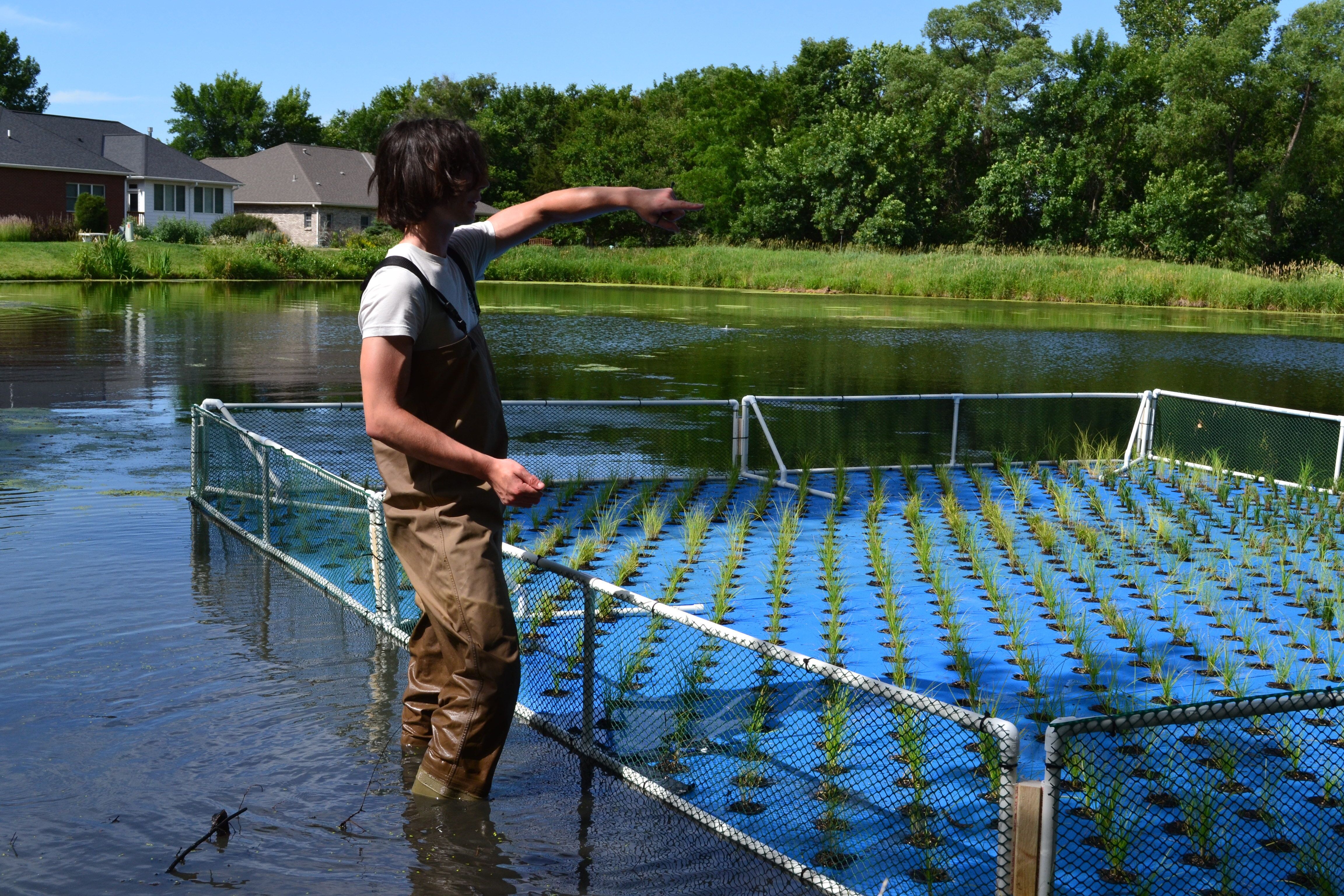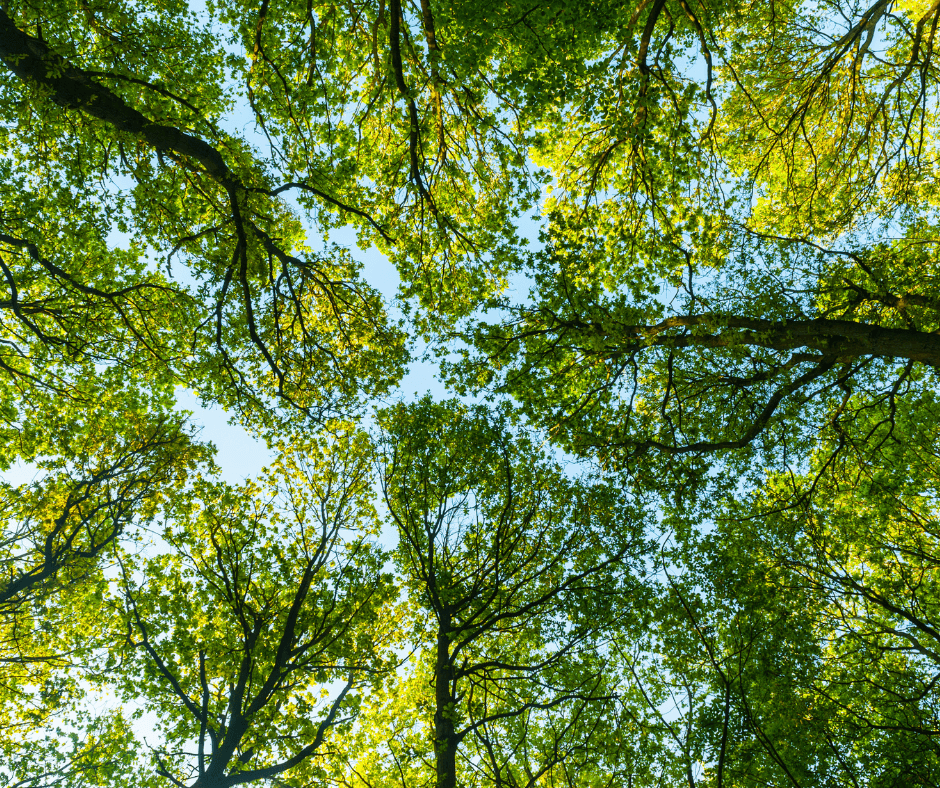
The Nebraska Statewide Arboretum may be best known for tree planting, garden making and environmental education, but more recently, we’ve dipped our toes, so to speak, into a new horticultural endeavor: wetlands ecology. NSA is partnering with Dr. Steven Comfort, UNL professor of soil and water chemistry, to provide nearly 10,000 sedges for an innovative project that aims to decrease high levels of nitrogen and phosphorus in urban ponds.
How It Works
A variety of sedges are first replanted into specially designed pots by a crew of NSA volunteers. The sedges are then transported from NSA’s greenhouses to an urban pond, where they are snapped into a large foam rubber mat, which is then anchored to the bottom of the pond.
The plant roots are suspended in the water, where they absorb nitrogen and phosphorus. Microbes on the plant roots convert nitrate to nitrogen gas, which safely returns to the atmosphere. Too much nitrogen and phosphorus can lead to an overabundance of algae, which can then kill fish and other aquatic species. Over time, the decrease in nitrogen and phosphorus allows oxygen levels in the water to increase, which results in less algae, clearer water and healthier fish.
Calen Pollard, a junior biological systems engineering major, has helped to construct and install three floating wetland structures so far.
“It’s been very cool to see a project through from start to finish,” said Pollard. “I never thought I would do environmental work, but after this semester and this summer, I think it’s something I could definitely go into.”
The floating wetlands are used in combination with a chemical treatment that employs lanthanum, a rare-earth metal, to remove excessive phosphate from nutrient-rich water. Lanthanum binds to phosphates in the water, creating lanthanum phosphate, a form of phosphorus not available for plant growth. The lanthanum is slowly released through a pump installed at the pond’s edge, which also adds oxygen to the water.
Patience for the Process
Even with both treatments, the process of transforming a pond from algae-ridden to clear is slow. But the treatments have been shown to work. A floating wetland and lanthanum pump installed by Dr. Comfort and his students in 2020 in the pond near the Cooper YMCA dramatically decreased algae in the pond over a three-year period.
“Having the plant source readily available from the Statewide Arboretum is a big asset to the project,” said Dr. Comfort, whose students have also helped to repot plants in NSA’s greenhouses this spring and summer. “It’s very convenient for us to have the plants right there on campus.”
Dr. Comfort initially tested 13 plant species in the floating wetlands, of which only 38% survived the first winter. He has narrowed the selection down to a few, like lance-fruited oval sedge (Carex scoparia), that are low-maintenance and have a high survival rate.
NSA Horticulture Coordinator Bob Henrickson noted that other sedges -- including fox (Carex vulpinoidea), yellow-fruited (Carex annectens), longhair (Carex comosa), fringed (Carex crinite), and tussock (Carex stricta) -- as well as common rush (Juncus effusus) and bulrushes would work well along the edge of a pond as well.
Ann Schroeder, president of a Lincoln neighborhood homeowner’s association, recently watched as a floating wetland was installed in the pond near her home. “This algae is the worst I’ve seen it in ten years,” she said, gesturing toward the water. “But we are excited about this. We’ve seen the other ponds around Lincoln where this process has worked, and we are looking forward to seeing the results here too.”

